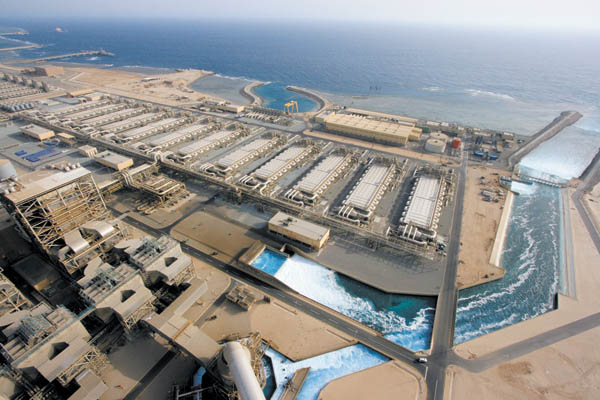[Sponsored Report] Doosan revamps older products with new tech

Doosan’s Shoaiba power and desalination plant, located in Saudi Arabia. Provided by the company
In his 2015 New Year’s message, Doosan Group Chairman Yongmaan Park expressed intentions to take full advantage of the recovering world economy. Park emphasized the importance of searching for new business opportunities in emerging markets like Southeast Asia and Africa, and said the year’s biggest management challenge will be applying new technology to Doosan’s original products.
Earlier this year, Doosan Heavy Industries and Construction (DHIC) won a contract to construct a power plant in Kazakhstan, marking the company’s debut in the Central Asian generation market.
DHIC will build a 310 MW-class Karabatan combined cycle thermal power plant worth over 340 billion won ($290 million), to be completed in February 2018, with client Karabatan Utility Solutions.
Built inside the Atyrau special economic zone, which includes a petrochemical complex, the Karabatan plant will be the area’s primary source of energy.
Doosan is also developing new growth engines by upgrading old processes and methods.
In July 2014, Doosan announced its plan to merge with company Fuel Cell Power, the domestic market leader in residential fuel cells. Shortly afterwards, Doosan acquired ClearEdge Power, an American company that develops fuel cell technology for buildings, and founded Doosan Fuel Cell America.
Highly efficient regardless of their size, fuel cells have a wide range of uses, from homes to office buildings. Doosan’s fuel cell-related markets - construction, regulation and housing - had a total market size of 1.8 trillion won in 2012 and are expected to reach 5 trillion won in 2018 and 40 trillion in 2023.
Doosan is also focusing on extending its business reach by combining traditional manufacturing with information and communications technology.
DHIC set up a remote monitoring service center in its Changwon, South Gyeongsang, headquarters and a software center in their Seoul office. The two will process information about plant management and apply the data to enhance efficiency. They will immediately provide breakdown predictions and suggestions for solutions based on the information.
An example of Doosan’s experiments in combining new and old technology is the DX380LC-3, a 38-ton excavator made in 2013.
The company combined the machine with new tools like D-ECOPOWER, which uses nine pressure sensors to calculate exactly how much power the machine needs to use, and then automatically adjusts its hydraulic pumps.
Compared to the original excavator of the same size, fuel efficiency per workload was improved by 24 percent and operation control was boosted by 20 percent.










with the Korea JoongAng Daily
To write comments, please log in to one of the accounts.
Standards Board Policy (0/250자)